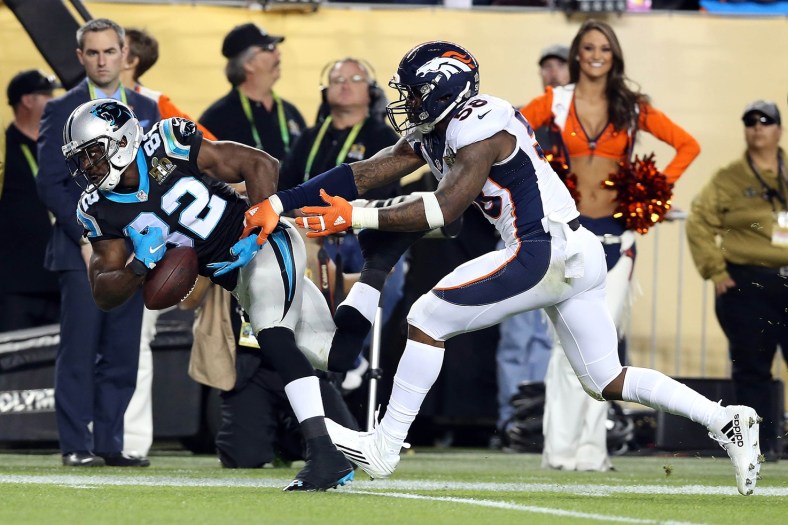
The NFL has a problem with determining what is and what is not a catch.
We’ve seen numerous examples the past couple of years where two seemingly identical plays get called the opposite way, and the league’s V.P. of Officiating Dean Blandino admitted last season that there will always be some subjectivity to what is ruled as a legal catch.
The folks at SBNation.com did a fine job recently breaking down some of them, and it’s truly confusing to see how some of these plays could possibly generate different outcomes.
In an effort to try and explain to the general public exactly what it is that constitutes a legal catch in the NFL, the league introduced a new video and subsequent written explanation, which you can see here.
The written explanation for what a catch is is basically boiled down to these three factors:
- secures control of the ball in his hands or arms prior to the ball touching the ground; and
- touches the ground inbounds with both feet or with any part of his body other than his hands; and
- maintains control of the ball after (a) and (b) have been fulfilled, until he has clearly become a runner (see 3-2-7 Item 2).
Then there’s this interesting little note at the bottom:
“Note: If a player has control of the ball, a slight movement of the ball will not be considered a loss of possession. He must lose control of the ball in order to rule that there has been a loss of possession.”
This is only part of the “subjectivity” part of the overly complicated rule.
The rule will almost certainly continue to be a problem for the NFL going forward, especially in light of recent reports which indicate the league has no intention of changing it any time soon.
Really, it should be a simple rule to determine what is and what isn’t a catch. The league’s preference at this time is to keep things complicated and subjective. This only leads to controversy and bitterness when big plays go the wrong way, such as Jerricho Cotchery’s catch in Super Bowl 50, which was ruled an incomplete pass.